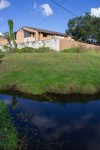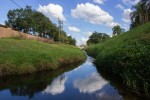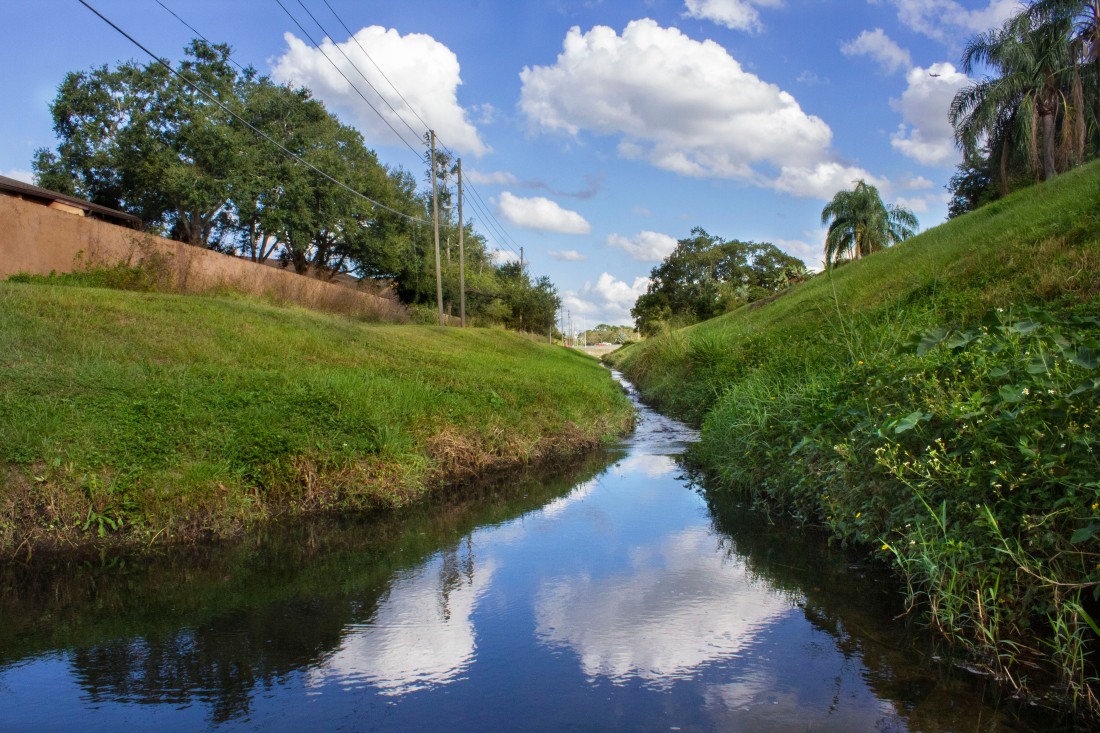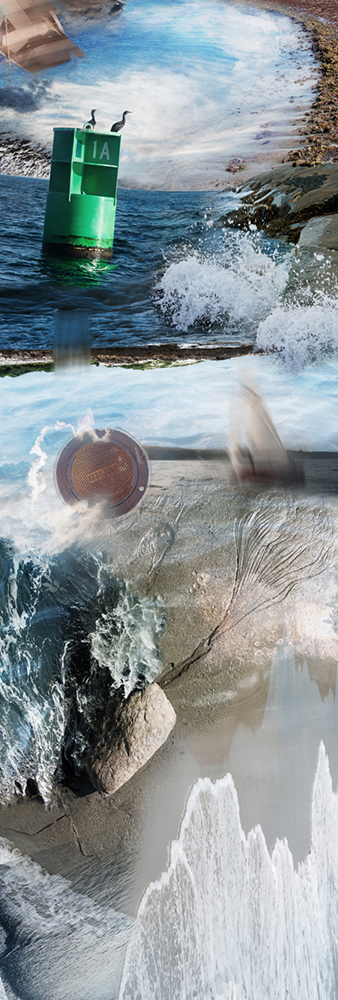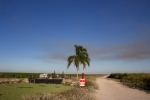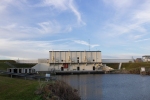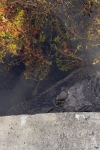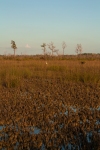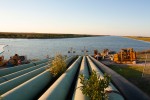-What was/is the initial idea, how is it evolving?
I began the project wanting to explore the way water exists within the Florida landscapes, following the way human activity impacts the various ecosystems, mostly considering the impact of chemicals and fertilizers we introduced. As my work for my Senior Capstone project has progressed I have become more focused on the ways we manage and control the flow of water and how that impacts the existing ecosystems. While in the Everglades this past weekend, I was incredibly drawn to the system of canals and levees that exist North or the park, restricting the natural water flow to the water permeated ecosystems. I want to continue to look at how we control water in order to enable humans to exist in areas they may have been unable to without manipulating nature.
• Why do you feel the images you selected to print for this critique are your strongest, from among the group of new images? (i.e., what was your criteria for selection)
I wanted to encompass the different elements of water control as well as the way water exists in the ecosystems. I selected these images because they show varying levels of controlling the water, the use of water, pollution of water, with several images of the natural ecosystems to compliment them. In several of the shots of the natural ecosystems I made sure to include elements of human presence, such as a drainage pipe or a water depth meter. I also included multiple images that were solely natural, highlighting the presence of water in it. I feel that these are the strongest based on their compositions, lighting, and the way it addressed the content I am interested in. I had a lot of photos to sift through, but the most prominent ones were those of the human involvement in the land, thus why the majority of the photos are of the levees and canals or agriculture, rather than the natural system.
• What specific questions do you have about the work in terms of how someone other than yourself might interpret the imagery?
I am wondering if people will connect the levees and canals controlling the water with the natural ecosystems and if they connect the control of water with its impact on the land. I am also curious if people will connect all of the separate images, understanding that they are all connected and working together in the ecosystem. I am wondering how people will respond to the images of the canals and if they will understand that they are dredged, unnatural waterways. I have many images of the levees and canals so I am wondering if people are able to think about our control of the water with the majority of the photos representing it. I am also wondering if I should have added more images of the natural systems and the different flora that exist within it.
– Why do you feel the selected image most strongly conveys your conceptual content?
I chose this image because it directly shows the human involvement in landscape while also showing environmental impact of those actions in the water. It shows the natural plant life surrounding this body of water, that can be assumed to be unnatural with the rocky shores and pipes emptying into the pond. The pipes highlight our role manipulating the water, while the unnatural, algae and poor water quality highlight the impacts of these controls. The gate in the background further suggests the unnatural elements of the system depicted as it is another human introduction into the ecosystem. Though this piece does not highlight the role of water in natural ecosystems, it does highlight our control of it and the impacts that creates.
– How do you hope the formal treatment of each image impacts the interpretation?
I am hoping that the formal treatment of these images will emphasize the natural elements of the scene that are impacted by human involvement. In the highly edited version I wanted to emphasize the unnatural algae that has grown in the retention pond that was fed by the pipe. I wanted it to be clear that the way the water entered the system was unnatural and thus producing unnatural consequences, such as the production of this algae and the murky water. I hope that the formal treatment further highlights the ideas I am engaging in, forcing the viewers to consider our role in nature.
















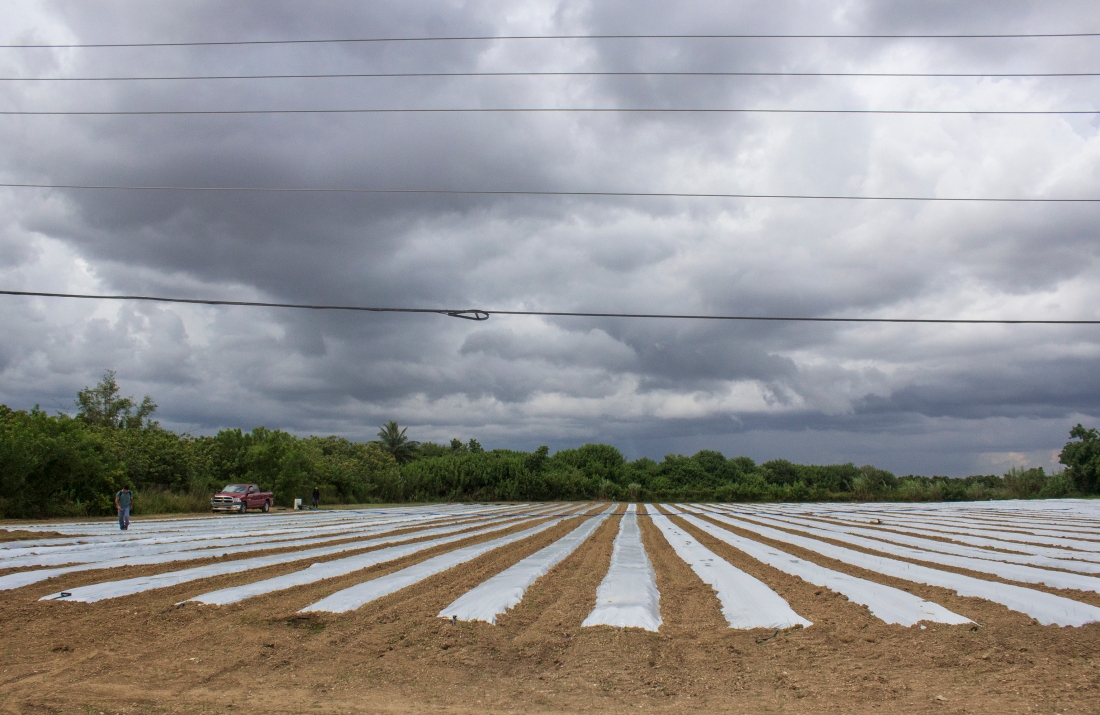
 What was/is the initial idea, how is it evolving?
What was/is the initial idea, how is it evolving?








 This week I was looking at the work of Hashem Shakeri who photographs Hamun Lake, one of the largest lakes that is now mostly dried up due to massive droughts stemming from the changing climate. His photos have a desaturated quality whihch speak to the arid atmosphere and lack of water They appear to be almost sandy in their coloring and desaturation, speaking to the desertification of the area. He captures the drying out lake, the impacts of this, and the way humans are impacted by these changing, capturing instances of everyday life. Overall, his work approaches the issue from all angels, something i am interested doing in my own practice.
This week I was looking at the work of Hashem Shakeri who photographs Hamun Lake, one of the largest lakes that is now mostly dried up due to massive droughts stemming from the changing climate. His photos have a desaturated quality whihch speak to the arid atmosphere and lack of water They appear to be almost sandy in their coloring and desaturation, speaking to the desertification of the area. He captures the drying out lake, the impacts of this, and the way humans are impacted by these changing, capturing instances of everyday life. Overall, his work approaches the issue from all angels, something i am interested doing in my own practice.

